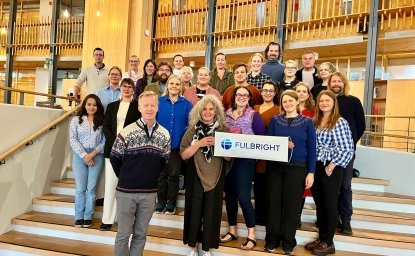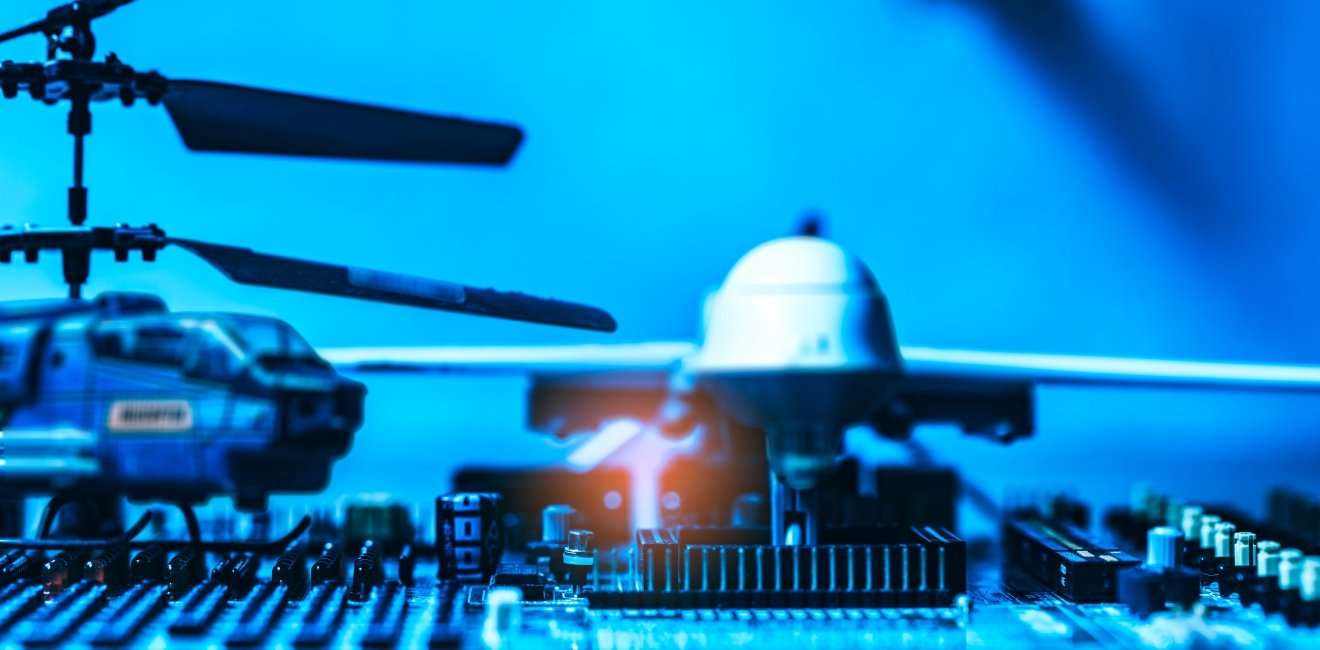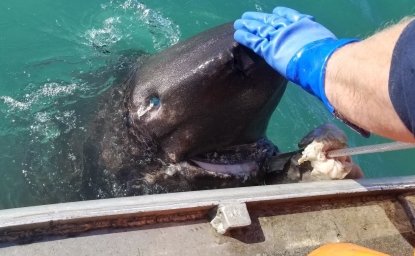
A blog of the Polar Institute
Russia’s strategy in the Arctic is influenced by a combination of economic, environmental, military, and geopolitical factors. In this context, drones, and more broadly unmanned vehicles, are assigned a special status due to their perceived utility in strengthening security and surveillance capabilities; a recognition that symbolizes Moscow's commitment to adapting to the ever-changing Arctic environment while asserting its influence in this pivotal region. At the core of these drones are semiconductors, a resource that has garnered renewed geostrategic attention as nations compete to secure their semiconductor supply chains and reduce their dependency on potential adversaries for these crucial components. As the Arctic undergoes rapid transformation, Russia's reliance on drones and its demand for semiconductors are expected to increase, representing a significant factor in shaping the future dynamics of Arctic security and geopolitics. This is especially noteworthy given that acquiring crucial semiconductors for Arctic drones has become a formidable challenge for Moscow since its invasion of Ukraine. This vulnerability, in turn, is anticipated to have a substantial impact on Russia's posture and partnerships in the Arctic, necessitating careful monitoring and assessment.
Russia’s Arctic Posture: How Important are Drones?
This apparent increase in drone usage is evidenced in recent announcements indicating Russia's plan to establish multiple bases for long-range drones along the Northern Sea Route. These drones are set to conduct surveillance of sea and airspace, participate in search and rescue missions, and enhance the overall situational awareness along the country’s sizeable maritime domain in the Arctic. Their deployment, in turn, underscores Russia's dedication to strengthening surveillance and response capabilities in the Arctic through the development of dual-use technologies tailored to withstand the harsh Arctic conditions. Since the late 2000s, for instance, unmanned aerial vehicles have been introduced for intelligence, surveillance, and reconnaissance missions. This focus on dual-use technologies, it is important to note, also aligns with Moscow’s approach to constructing dual-use military bases and outposts in the Arctic, the majority of which serve both civilian and military purposes.
Overall, drones appear to hold significant importance for Russia's military strategy in the Arctic and beyond, serving diverse roles ranging from surveillance and reconnaissance to communications and strike missions. Aware of the military, domestic and commercial significance of drones, therefore, it is not surprising that Moscow has articulated a comprehensive strategy for their development despite lagging behind the West in drone technologies; a challenge that it has sought to address by pursuing foreign technology acquisitions even though sanctions and economic constraints have limited the scope of such undertakings.
Russia’s most significant challenge in developing drones, however, has its roots in its lack of a robust domestic semiconductor industry. Despite Moscow’s plans to achieve self-sufficiency in chip production, it has traditionally depended on importing Western technologies to satisfy its needs. According to Russian media reports, however, Western-led sanctions and the compliance of key suppliers like South Korea and Taiwan have now disrupted Moscow’s semiconductor import channels thereby further aggravating an existing strategic vulnerability. Russia does have a small domestic chip-making industry which is solely focused on serving the Russian Armed Forces. However, this sector was in a financially dire situation even before the war while its limited production capacity could not meet the needs of the Russian military in pre-war era; two shortcomings which have been exacerbated by the ongoing war in Ukraine. To address the latter - that is constrained production capacity - the Kremlin has had to rely heavily on Iranian-made drones while grudgingly turning to Chinese suppliers and technology to keep its small but strategically crucial semiconductor industry aloft. This has deepened Moscow’s dependency on China to the point that it now receives 88% of its chips from China.
The strategic significance of Moscow’s dire semiconductor situation lies in the fact that semiconductors underpin the evolution of drone and unmanned vehicle technologies, shaping the landscape of modern military operations. Serving as the foundation of communication networks, data analysis, and decision-making processes, semiconductors are indispensable in defense systems. The significance of semiconductors in fortifying the defense industrial base is underscored in Chip Wars, emphasizing their critical role in enhancing the capabilities of military equipment. From communication to missile guidance systems, semiconductors enhance performance, efficiency, and reliability. As the backbone of modern military technology, semiconductors not only bolster defense operations but also contribute to shaping the future of warfare through emerging technologies like artificial intelligence and autonomous systems. Therefore, the importance of semiconductors in the development of drone and unmanned vehicle technologies cannot be overstated as they continue to redefine modern warfare dynamics.
What Do Sanctions Mean for Russia’s Arctic Strategy and the Broader Arctic Security Complex
The current ban on the sale of semiconductors presents a pivotal challenge to Russia's strategy in the Arctic, particularly concerning its reliance on drones for security and surveillance purposes. With semiconductor imports disrupted due to Western-led sanctions and compliance from key suppliers, Russia finds itself in a precarious position, grappling with limited options to advance its drone capabilities. One plausible repercussion of this ban could be a shift in Moscow's approach towards enhancing its semiconductor industry domestically; a move necessitated by the urgency to maintain sovereignty and security in the Arctic. However, the challenges associated with revamping the domestic chip-making industry, including financial constraints and a lack of both technological expertise and skilled human resources, pose formidable hurdles to this endeavor.
Unable to revamp its own domestic chip making industry, engage in technological cooperation with the leading chip makers, or purchase western technology, Moscow is left with but two options in its search for advanced chips. The first involves establishing additional smuggling and evasion networks, which would significantly drain state coffers. Not only are these clandestine operations risky due to the potential for exposure on short notice, but they also incur higher costs compared to direct purchases from suppliers. Consequently, such endeavors pose considerable risks and costs to the Kremlin.
The second option entails increased reliance on Chinese entities and technologies to procure model semiconductors suitable for producing modern stealth drones and precision missiles. This intention was confirmed by Presidents Putin and Xi during their February 2024 meeting, where they pledged to "maintain the stability" of industrial trade, highlighting China's role in supplying critical components to Russia's defense industrial base. However, this option presents two main risks. Firstly, acquiring Western technologies through Chinese companies remains vulnerable to US sanctions, potentially leading to abrupt termination of transactions. Secondly, while Russia may utilize Chinese-made chips, they are technologically inferior to Western models and thus their suitability to produce most advanced weapon systems and drones cannot be taken for granted. This is underscored by Beijing's own reliance on Western technologies and semiconductors for developing its modern arsenal.
Moreover, Moscow's heightened dependence on China as its primary semiconductor supplier carries significant geopolitical and strategic ramifications. This deeper dependency could reinforce Russia's status as a junior partner to China and increase Beijing's influence across various sectors in the Russian Arctic, extending beyond commercial initiatives to encompass strategically sensitive domains such as communication, 5G, and surveillance. Such a scenario, in turn, has implications for both China’s influence and strategic reach in the Arctic and, more broadly, the ambiguity over the role and rights of non-Arctic states in regional affairs.
More broadly, the proliferation of drones across the Arctic raises pertinent security concerns and underscores the evolving nature of military activities in the region. Drones offer a means of projecting power and enhancing surveillance, but their deployment also prompts questions about territorial sovereignty and potential militarization. As such, a platform to discuss dual-use technologies is urgently needed to prevent geopolitical miscalculations. However, the current tensions between the Arctic seven and Russia hinder the creation of such a venue.
Conclusion
The ban on semiconductor sales underscores the intricate interplay among technological dependencies, geopolitical rivalries, and security imperatives in the Arctic. As Arctic nations aim to strengthen their surveillance and defense capabilities amidst evolving security challenges, the semiconductor ban introduces a new layer of uncertainty and competition, impacting regional stability and governance.
The current ban on semiconductor sales directly affects Russia's ability to advance its drone capabilities, compelling Moscow to navigate a complex landscape with limited options. While efforts to bolster domestic semiconductor production may be pursued, significant challenges like financial constraints and a lack of technological expertise loom large. Additionally, increased reliance on Chinese suppliers carries geopolitical implications, potentially reinforcing Russia's dependency on China and altering the strategic balance in the Arctic.
Meanwhile, the absence of an Arctic strategic dialogue platform heightens the risk of miscalculations among states, especially in a region which necessitates heavy reliance on technologically advanced equipment for defense and security objectives. A reformed Arctic Council would be the optimal platform to comprehensively discuss the use of dual-use technologies and equipment.
However, this option is likely not viable due to low trust between Russia and the West as well as potential sensitivities among Eastern European nations who might perceive such attempts as a pretext to a softening stance on Russia. Alternatively, one could argue for adding drone discussions to the work of scientific subcommittees at the Arctic Council, where Russia and the Arctic Seven have maintained ongoing communication. Given the political and strategic nature of drone topics, such an undertaking is highly unlikely to yield results. Another option would be Jeremy Greenwood's idea of voluntary Russian absence from the Arctic Council whereby Moscow retains “a say in the Council's final decision via correspondence”. Nevertheless, it is challenging to see how such an undertaking would bridge the gap between Russia and the Arctic Seven; if anything, it would formalize it.
In light of these constraints, it is reasonable to suggest that the ban on semiconductors raises the potential for the emergence of a Cold War II scenario in the Arctic; one that could enable non-Arctic nations to make strategic inroads in the Arctic with Moscow's support, leading to the eventual overhaul of the regional order as suggested in the latest NATO strategic forecast.
Author


Polar Institute
Since its inception in 2017, the Polar Institute has become a premier forum for discussion and policy analysis of Arctic and Antarctic issues, and is known in Washington, DC and elsewhere as the Arctic Public Square. The Institute holistically studies the central policy issues facing these regions—with an emphasis on Arctic governance, climate change, economic development, scientific research, security, and Indigenous communities—and communicates trusted analysis to policymakers and other stakeholders. Read more

Explore More in Polar Points
Browse Polar Points
Greenland’s New Governing Coalition Signals Consensus

Fulbright Arctic Initiative IV Scholar at the Polar Institute


